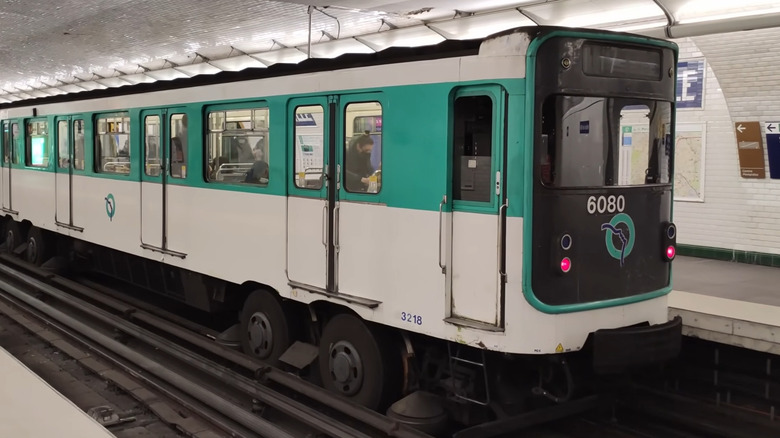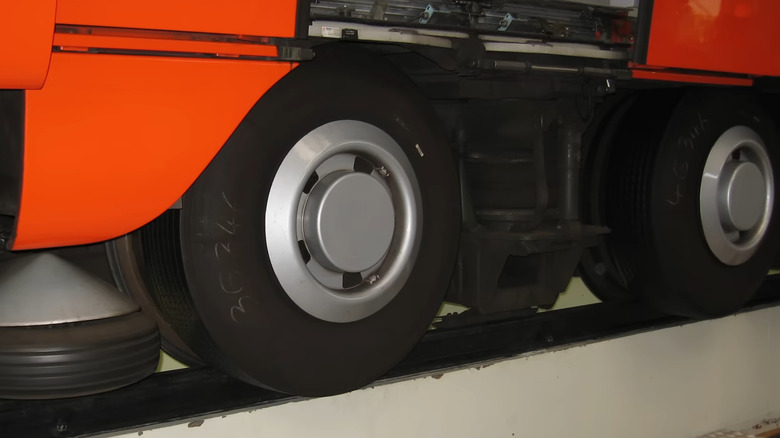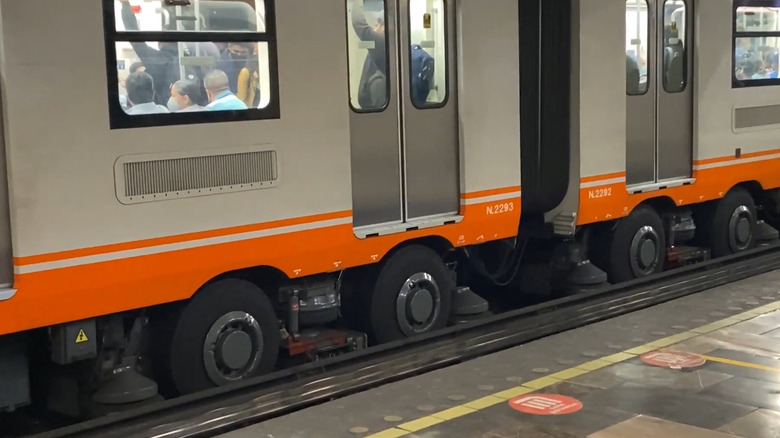Why Do Some Metro Trains Have Rubber Tires?
Public transport has come a long way from old time steam engine trains, with rapid transits, or metros, being commonplace in most large cities. But from the beginning, most trains relied on steel wheels to support them. However, certain metros will instead choose to employ rubber tires similar to those found on automobiles.
As you can imagine, rubber tires on a public transport carrying hundreds of passengers while moving at high speeds don't work quite the same as your Prius. To aid in traction, these wheels rely on special horizontal rolling pads that roll them through the guide bar's interior, with the bars also providing the vehicle with power. The guide system itself can vary in its construction depending on the specific network. While a good few railways use the more standard rolled or flat steel to support rubber tires, many of these metro systems instead rely on guide bars constructed out of concrete that allow for greater friction and roll resistance.
The origins of rubber tire metros dates back to the early 20th century in France, when companies such as Michelin sought to replace the steel wheels of locomotives with rubber ones to aid in acceleration and comfort. Rubber tire metros continue to be widely used throughout France, although other countries such as Mexico and Canada have gone on to adopt the tire type through some of their systems as well.
Pros of taking a rubber-tyred metro
If you're accustomed to taking steel-wheeled metros, you may be wondering if their rubber tire counterparts are all that better, especially considering their relative scarcity throughout much of the world. In truth, rubber tire metros come with a hearty helping of benefits that makes them ideal for tackling the terrain of certain environments.
Rubber is more adept than other material at gripping onto surfaces, which in turn allows the motor to exert more power on any given surface. This is an especially crucial adaptation for locations where hills and steep inclines are more prominent. In general, rubber tire metros offer a smoother ride as they require less distance to accelerate and decelerate. For passengers, this can be beneficial, as rubber tire metros typically offer a more comfortable overall ride.
This aspect even has its perks for those outside of the train. Since these metros require less space to come to a full brake, stops can be positioned at shorter distances from one another. And while the inside of a rubber tire metro isn't much quieter than that of one that uses steel, it produces far less noise from the outside. This makes it ideal for neighborhoods and businesses nearby the station that would otherwise be disturbed by excessive noise.
Drawbacks of taking a rubber-tyred metro
There's no denying the place that rubber tire metros have in their respective societies. But as beneficial as rubber tire metros can be, there's a reason why they're not as readily used as steel wheels. In fact, many of the same qualities that make these machines an asset also add to their impractical nature.
Perhaps the biggest drawback to rubber tires is their cost of upkeep. Just as with car tires, rubber tires on metros won't last forever. In order to ensure the utmost safety for passengers, they need to be maintained and replaced on a regular basis. This ups the operating costs by a significant amount, as rubber tires lack the carrying capacity of steel, meaning more are needed to support a packed metro. The increase in friction allotted by rubber tires also makes the engine work harder, leading to more rapid wear and tear. Additionally, while extreme rain, ice, and snow can negatively affect any given train's ability to stay on track, rubber tire metros can be especially compromised by such situations.
Rubber tires are also a less sustainable. Even though rubber can be recycled in a variety of places, reusing them as tires is a difficult endeavor, especially for a machine as demanding as a metro. As rubber tires tend to wear out quicker, this can turn out to be a problem in the long run.


